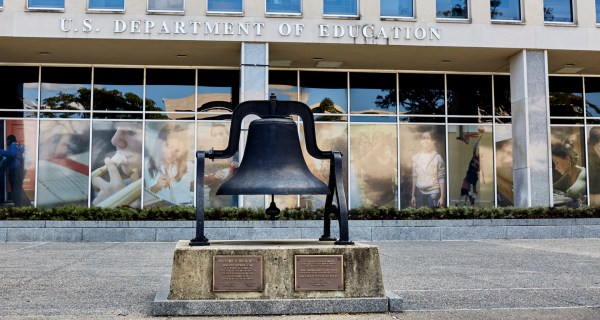- Sponsored
- Modernization
Leaders share how agencies bring agility into application development

Federal agencies looking to modernize legacy IT systems and applications are turning to technologies that can give them more agility.
Executives from both government and industry share in a new video series how their organizations are using cloud-ready and cloud-native applications, together with open source code, to facilitate quicker development times.
Additionally, tapping into open source development communities allows them to overcome some of chronic IT skills gaps many agencies continue to face.
But it also has yielded a variety of other IT benefits, say executives featured in the “Champions of Digital Transformation” video series, produced by FedScoop and underwritten by Red Hat:
Open source is transforming culture and processes within organizations
“When I think about how [open source] is adding value to the cloud native space, especially around application development, I think a lot of [the value] is invented in open source communities, right?” says Jason Corey director of emerging technologies at Red Hat. Community participation in code development is perhaps the biggest value-add with cloud native applications, he says.
Jeff Walter, deputy head and data systems engineering lead for NASA Langley, sees the added benefit of leveraging open source to meet skills needs for development “because the number of people intimately familiar with a niche commercial solution are far fewer than in the number of talented developers familiar with open source packages.”
Open source is being used both in civilian and defense agencies. Even though open source code is used for unclassified applications, it does not mean it’s unsecure, assures Michael Kanaan, co-chair of artificial intelligence and machine learning for the U.S. Air Force.
“We operate in a world where we want to use containers and Kubernetes to maneuver in the field itself and to have partners we otherwise don’t have. Open source brings legitimate concerns, but to harden something is something we can take on, it doesn’t mean we have to rebuild it ourselves,” he explains.
Government’s use of APIs and containers is a key part of its cloud transformation
Matt Conner, CISO and director in the Cybersecurity office at the National Geospatial-Intelligence Agency (NGA) shares how his agency has been on its cloud journey for four years. With decades of data, NGA’s challenge is being able to find, obtain and use that data – both internally and for NGA’s customers. “APIs simplify that entire process,” Conner says.
“From a security perspective, when you couple APIs with strong identity and access controls you can make access decisions at the point of consumption, ensuring that only the right people get the data they need,” Conner says.
APIs and containers allows the Air Force to create its own community of open source coders, notes Kanaan.
“As opposed to taking years to build a product, or a process, now you are moving things via containers,” he says. “Now you’re updating things. Now you’re looking more towards the developer community. And this business-to-developer relationship is one we can [build on] in the Air Force, because those developers are everywhere.”
He says the Air Force is looking at the business to developer community as a way for them to get their own airmen to code projects and “imagine their own future.”
These capabilities also allow agencies to upgrade services much more quickly. Aidan Feldman, technology director for Technology Transformation Services (TTS) at the General Services Administration (GSA), explains that because most of TTS’s programs are cloud native, those capabilities give them an advantage.
“The trick is staying on top of changes as they happen, because what might have been a best practice six months ago, might not be the case anymore. It’s our job to stay on top of those changes and to understand what we can swap out that was previously built custom that can now be a shared service, or what can we automate that was a manual process before,” Feldman says.
Other participants in the video series include:
- Adrian Monza, Deputy CISO, U.S. Citizen and Immigration Services (USCIS)
- Francisco Salguero, CIO, Federal Communications Commission (FCC) (former Deputy CISO, USDA)
- Adam Clater, Chief Architect, Red Hat
- Eamon McCormick, Director of Emerging Technologies, Federal, Red Hat
- Joe Dickman, Senior Vice President, Vizuri
- Karl Wehden, Vice President, Product Strategy, Lightbend
- Maci Acquaviva, Strategic Alliance Manager, Dynatrace
This video series was produced by FedScoop and sponsored by Red Hat.






